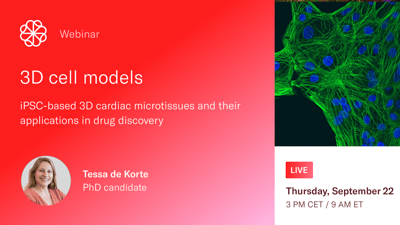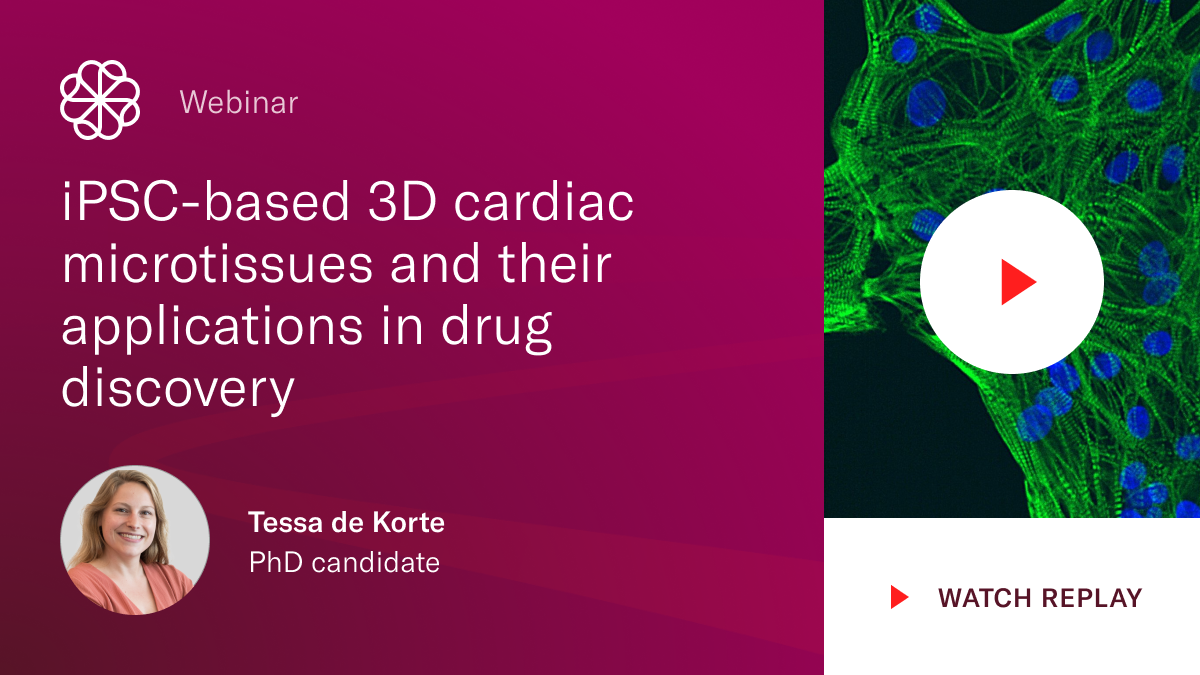The introduction of disease models based on human induced pluripotent stem cell (iPSC)-derived cardiomyocytes has enabled bringing human biology to the early stages of drug discovery, to increase the chances of success in clinical trials. Researchers are now exploring 3D models composed of several cell types to create a more complex environment and further improve the sensitivity and accuracy of iPSC-derived cardiomyocytes as disease models. However, 3D models often require high cell numbers along with complex equipment which limits their suitability for implementation in high-throughput screenings.
Together with the LUMC, Ncardia has established strategies to generate scalable 3D cardiac microtissues in an automated manner, as well as procedures to evaluate the compound responses and facilitate their use in high-throughput screenings. These microtissues are made from a tri-cellular combination of iPSC-derived cardiomyocytes, endothelial cells, and fibroblasts, which enhances cardiac maturation and improves drug response predictions.
In this webinar we will present the challenges and advantages of generating 3D cardiac microtissues and their application in high-throughput assays for cardiac safety assessment and disease modeling.
In this webinar, you will learn more about:
-
Automation of microtissue formation process
-
Drug response prediction using 3D cardiac microtissues
-
How 3D cardiac microtissues can be used in HTS for drug discovery purposes

Fill out the form to watch the replay:

